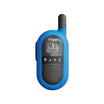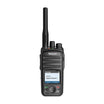In the vast world of telecommunications, the Mobile Network Code (MNC) plays a crucial role in identifying mobile phone operators or carriers. This unique five-digit number is more than just a sequence of digits; it's a key that unlocks the network identity in the global mobile ecosystem.
What is a Mobile Network Code?
The Mobile Network Code, combined with the Mobile Country Code (MCC), forms the backbone of the system that distinguishes one mobile network operator from another. These codes are vital for routing calls and data across networks and ensuring that mobile subscribers can connect seamlessly worldwide.
The Function of MNC
Each mobile operator is assigned a specific MNC, which, when paired with the MCC, creates a unique identifier for that operator in a given country. This combination is essential for international roaming, allowing users to connect to foreign networks while traveling abroad without changing their phone number.
MNC in Everyday Communication
For consumers, the MNC is the invisible force that guides their mobile devices to connect to the correct network, whether they are making calls, sending texts, or using data services. It's a critical component in the complex dance of signals that enables our interconnected, mobile-centric world.
The Significance of MNC
Understanding MNCs is crucial for telecom professionals, especially when configuring networks, troubleshooting connectivity issues, or setting up roaming agreements. For the average user, though, it's a hidden mechanism that works behind the scenes to ensure their mobile device connects correctly and efficiently.
Conclusion
The Mobile Network Code may seem like a small piece of the telecommunications puzzle, but its impact is enormous. It ensures that millions of mobile users can communicate, navigate, and connect across different networks and borders, making it a cornerstone of our global communication infrastructure.












































